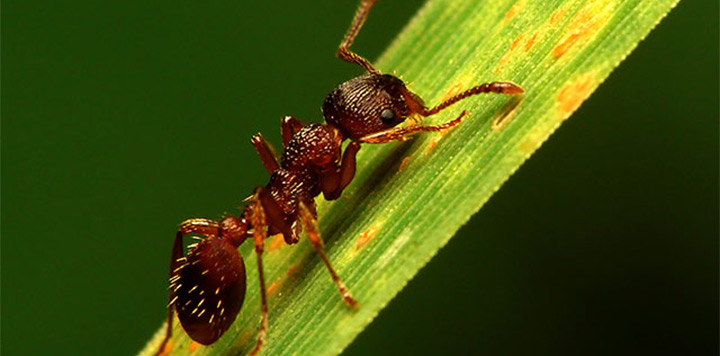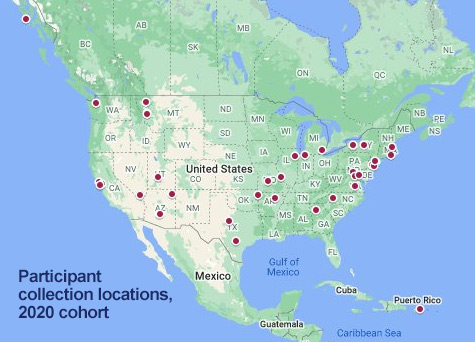
With funding from the National Institute of General Medical Sciences of the National Institutes of Health, the DNA Learning Center launched a pilot project, Barcoding US Ants, to show the feasibility of citizen scientists using DNA barcodes to identify and map the ant species of the United States. Just as a universal product code (UPC) identifies each commercial product, a DNA barcode can potentially identify each species of ant.
Barcoding US Ants merges citizen science with DNA barcoding to improve range maps for the ants of the United States. Citizen scientists collect and identify ants at locations throughout the US by monitoring ants' ranges and contribute to data that reveals responses to climate change or the movement of invasive species. Current range maps are fragmentary, and DNA barcodes exist for only half of the 900 species known species of ant in the US. Additionally, sequence variation within species may also be discovered and reveal species diversity or allow tracking of sub populations. Thus, this project can contribute new, valuable knowledge about an important group of insects that is both familiar and unknown, and aims to publish several hundred DNA barcodes to GenBank, the authoritative DNA database.
Wet Lab and Bioinformatics
The Barcoding US Ants project aims to allow the public to participate in distributed research during this period when the public is very limited. With online resources and video conference guidance, participants perform the initial stages of DNA barcoding: collecting, documenting, and preserving samples, followed by simple at-home DNA isolation with minimal materials and equipment. DNA and the intact portion of the organism—or another sample of the same organism—is then mailed to the DNALC for amplification and sequencing. After sequencing, participants are guided through sequence analysis and organism identification using DNALC’s online bioinformatics pipeline for DNA barcoding, DNA Subway Blue Line, and their results are published to online databases, contributing to our knowledge of ants while learning important concepts in molecular biology, ecology, and evolution.
Current Cohort
Over 100 participants from 39 teams across 23 US states and territories are expected to collect and process over 500 samples of ants.

Participation Resources
Additional resources to be added here in the future.
Eligibility
Science enthusiasts can create a team of three people with complementary interest/expertise in: local habitats, nature study, science methods, and computer analysis. A scientist, science teacher, naturalist, or anyone with experience in identifying ants is a plus. All team members must be at least 16 years of age, and at least one must be 21 or older.
Contact us about opportunities to participate in Barcoding US Ants.



